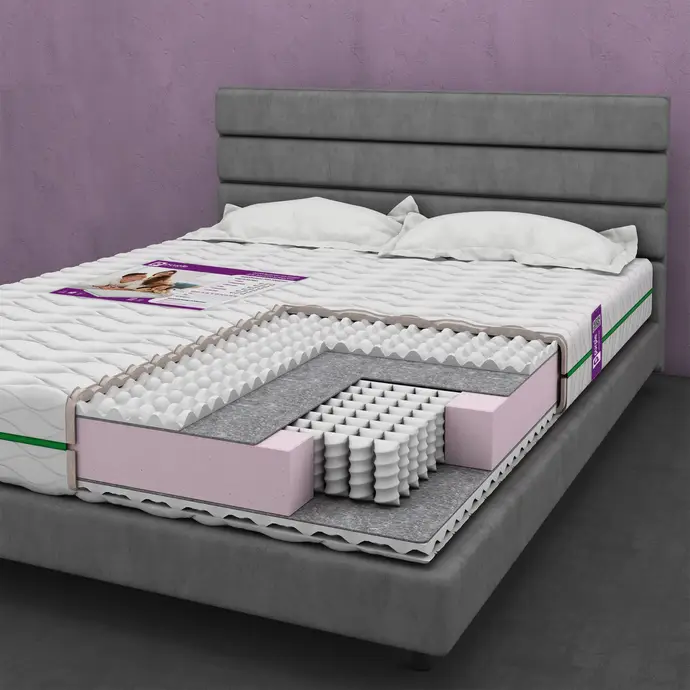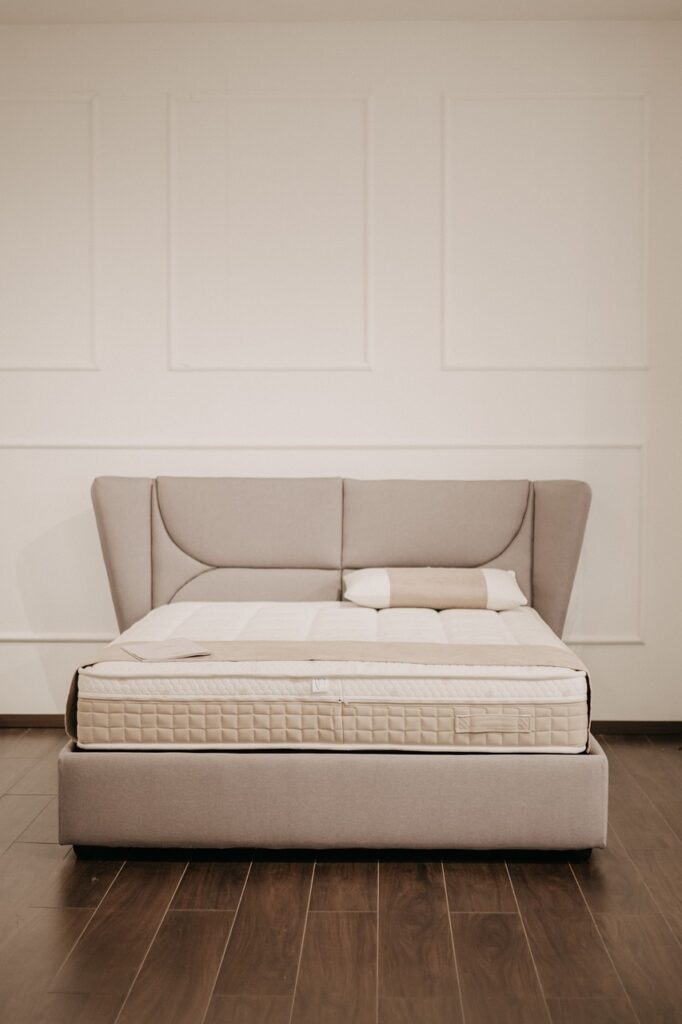Choosing an orthopaedic mattress is an important step in ensuring quality sleep and maintaining a healthy spine. The selection process requires attention to detail and an understanding of the key aspects that can affect your comfort and well-being. In this article, I will share with you information on how to choose the right orthopaedic mattress.
- Mattress type
The first step in choosing an orthopaedic mattress is to determine the right type. There are several different options available. Each has unique characteristics and the choice depends on your preferences and needs.
- Foam mattresses: They are made of different types of foam, such as polyurethane foam or latex. They provide even support and adapt to the contours of your body, providing comfort and reducing pressure on contact points. Foam mattresses are also good at cushioning movement, making them suitable for couples.
- Spring mattresses: These mattresses contain an internal system of springs that provide support and firmness. They allow good air circulation and ventilation, which helps reduce heat build-up. Depending on the type and construction of the springs, they can be firm or softer.
There are several types of spring mattresses:
a. Bonnell:
Bonnell springs are the most common type of springs, which form a clockwork-shaped system inside the mattress. They link together and respond to pressure to provide firmness and support. Bonnel springs may be more affordable, but they can transmit your partner’s movements in sleep.
b. Frame (Pocket):
Also known as “pocket springs”, are individual springs that are placed in separate pockets of the mattress. This allows each spring to move independently, providing point support for different parts of your body. Pocket springs also allow for less motion transfer between sleepers, making them attractive to couples.
c. Continental Prurines:
These mattresses are a combination of layers: a top layer of frame springs, a middle layer of polyurethane or latex foam, and a bottom layer of bonnet springs or polyurethane foam. This type of mattress provides a unique combination of support and comfort.
- Latex: Mattresses are made of natural or synthetic latex. They provide a unique combination of support and firmness, as well as anti-allergenic properties. Latex adapts to the shape of the body, supporting the natural curvature of the spine.
- Memory Foam : These mattresses are made of a material that reacts to your body heat and maintains its contour. This provides personalised support and reduces pressure on touch points. They also have the ability to regain their shape after use.
- Hybrid: They combine different materials, such as foam and springs, to achieve the best balance of support and comfort. This type of mattress may be suitable for those looking for a combination of different characteristics.
- Stiffness level
Mattress firmness is one of the key factors affecting the quality of sleep. Soft mattresses provide a deeper sinking experience and are suitable for those who sleep on their side. Medium firmness is recommended for those sleeping on their back, while firm mattresses are suitable for those who prefer to sleep on their stomach.
- Anatomical support
An orthopaedic mattress should provide the correct anatomical support for your spine. It is important that it supports the natural curvature of your body, preventing deformations during sleep. Especially for people with back problems, choosing an orthopaedic mattress is important. The right mattress can provide support and relieve stress on the spine, helping to reduce pain and discomfort
- Materials and quality

Examine the materials used to make the mattress. Quality materials provide durability and comfort. High-quality mattresses usually have a long lifespan and can provide maximum support.
- Thermoregulation and ventilation
Pay attention to the thermo-regulating and ventilation properties of the mattress. Effective ventilation helps to maintain an optimal level of moisture and comfort during sleep.
- Size and space
Choose a mattress size that is suitable for your bed and room. An orthopaedic mattress should fit well into the space and provide enough room for you to sleep. Orthopaedic mattresses are available in standard sizes such as single, one and a half bedroom, double and king-size. By choosing a standard size, you make it easier to find the right linen and accessories.
- Trial Period
Many manufacturers give you the opportunity to use the mattress on a trial basis. This gives you a chance to evaluate the comfort and whether it meets your expectations.
- Price and Budget
Set a budget that you are willing to spend on an orthopaedic mattress. Remember that this is an investment in your health and comfort, so choose the best value for money.
Perfecting your orthopedic mattress selection requires awareness and attention to detail. Consider your preferences, needs and sleeping habits to choose the perfect mattress that will give you a comfortable and healthy sleep.
This article is provided for information purposes only and is not a recommendation for specific action. Selecting an orthopaedic mattress is a responsible decision and it is recommended to consult a doctor or sleep specialist for best results. Your health deserves a personalised and professional approach.
Choose a new mattress and enjoy the benefits of discounts from ReBITme. Good luck!





